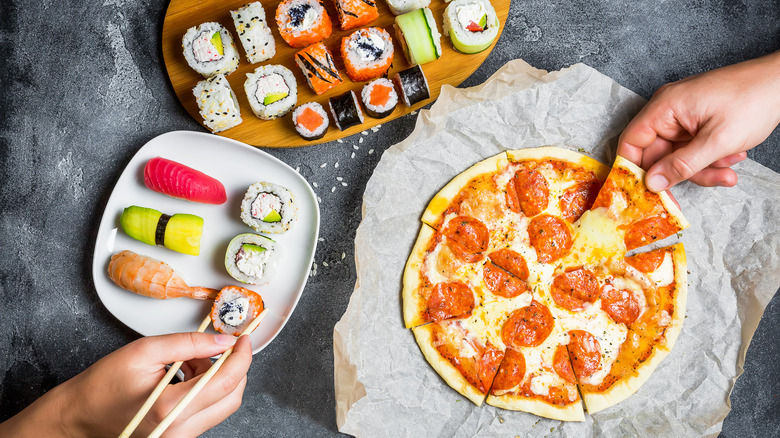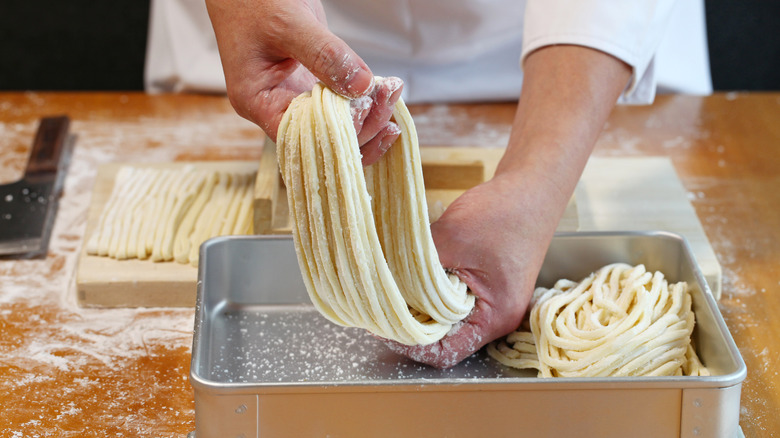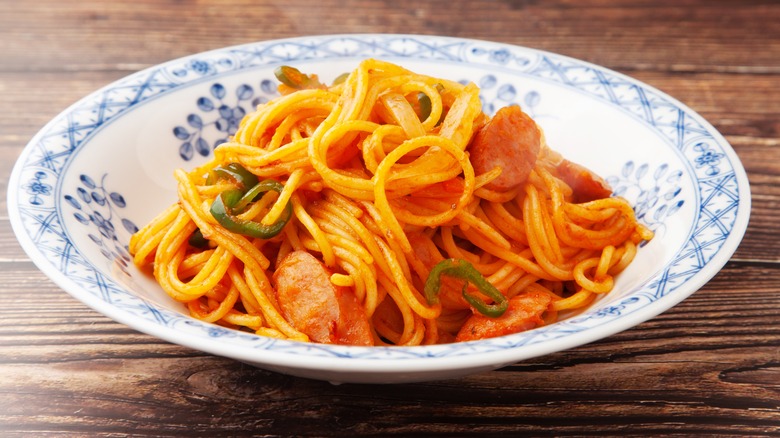What Is Itameshi Cuisine And Why Is It So Popular In Japan?
In most parts of North America, there's no shortage of restaurants that take inspiration from cuisines brought over by immigrants. Italian food is a particularly prevalent example, seeing as many of the clip-art-worthy images of it that stick in our minds are better known in the United States than they are in Italy. Picture generously portioned plates of spaghetti and meatballs, chicken parmesan, and garlicky breadsticks laid out on a banquet table at Olive Garden. Historians say those dishes didn't come to be until the turn of the 20th century when Italians escaping poverty were finally able to afford quality meat in their new home in the U.S. (per Smithsonian Magazine).
Of course, America isn't the only country with a taste for the flavors of the Bel Paese. Japan has its own take on Italian food, also known as Itameshi. Here's how it came to be, along with some dishes that define it.
Japanese takes on Italian (and Italian-American) classics
In Japanese, Itameshi simply translates to "Italian food." And just like Italian-American cuisine, Japan has its own way of doctoring up iconic dishes from the boot-shaped country. At an Itameshi-focused restaurant, another word that might be used in the same sentence is wafu, or "Japanese style." As such, instead of calling Japanese-style spaghetti "Itameshi spaghetti," it would likely be listed as "wafu spaghetti."
That particular dish, in all its variations, happens to be a standout in Itameshi cuisine. Nina Li Coomes offers a convincing manifesto for it in Eater, in which she explains that wafu spaghetti comprises "a whole category of various spaghetti dishes that are nudged with umami-laden soy sauce or butter emulsions, replace Parmesan with seaweed, or swap out basil for strips of verdant shiso." She adds that eateries dedicated to wafu spaghetti "[tend] to look more like a diner than a trattoria," serving an elusive fleet of regulars at casual counters fitted with bar stools.
Coomes cites Napolitan spaghetti (pictured below) as one of the most popular takes in the genre. It falls under the category of youshoku (as opposed to wafu), which means it takes inspiration from the West; a fusion of a fusion, if you will. To see how it and its fellow "red-sauce" counterparts came about on the Asian island, let's look back to the 1920s.
Out with the baguettes, in with the pasta
New Yorkers who shop at the Italian-centric market Eataly might be surprised to know that the chain landed in Tokyo two years before it popped up in the U.S. in 2010. That year, Corky White — who spent two grant-subsidized years studying the dining habits of Japanese culinary tourists in Italy — wrote in The Atlantic that Japanese cafes had been serving spaghetti since the 1920s. But it wasn't until the 1990s that Itameshi cuisine really flourished.
When Asian economies collapsed in 1991, White says "white-tablecloth restaurants with tall-toqued chefs trained in France at Bocuse or Taillevent [...] were no longer the standard bearers for fancy food." By contrast, Italian food was regarded as "friendly, cheap, and cheerful." While countries across Asia have since recovered from economic downfall (Japan is currently the third-richest Asian country with a GDP of $5.33 trillion, per World Population Review), Itameshi food continues to draw in customers in Japan and beyond. In a roundup of food-trend predictions for 2023, The New York Times asserts that "Japanese food is the cuisine all the other cuisines most want to hang out with."


